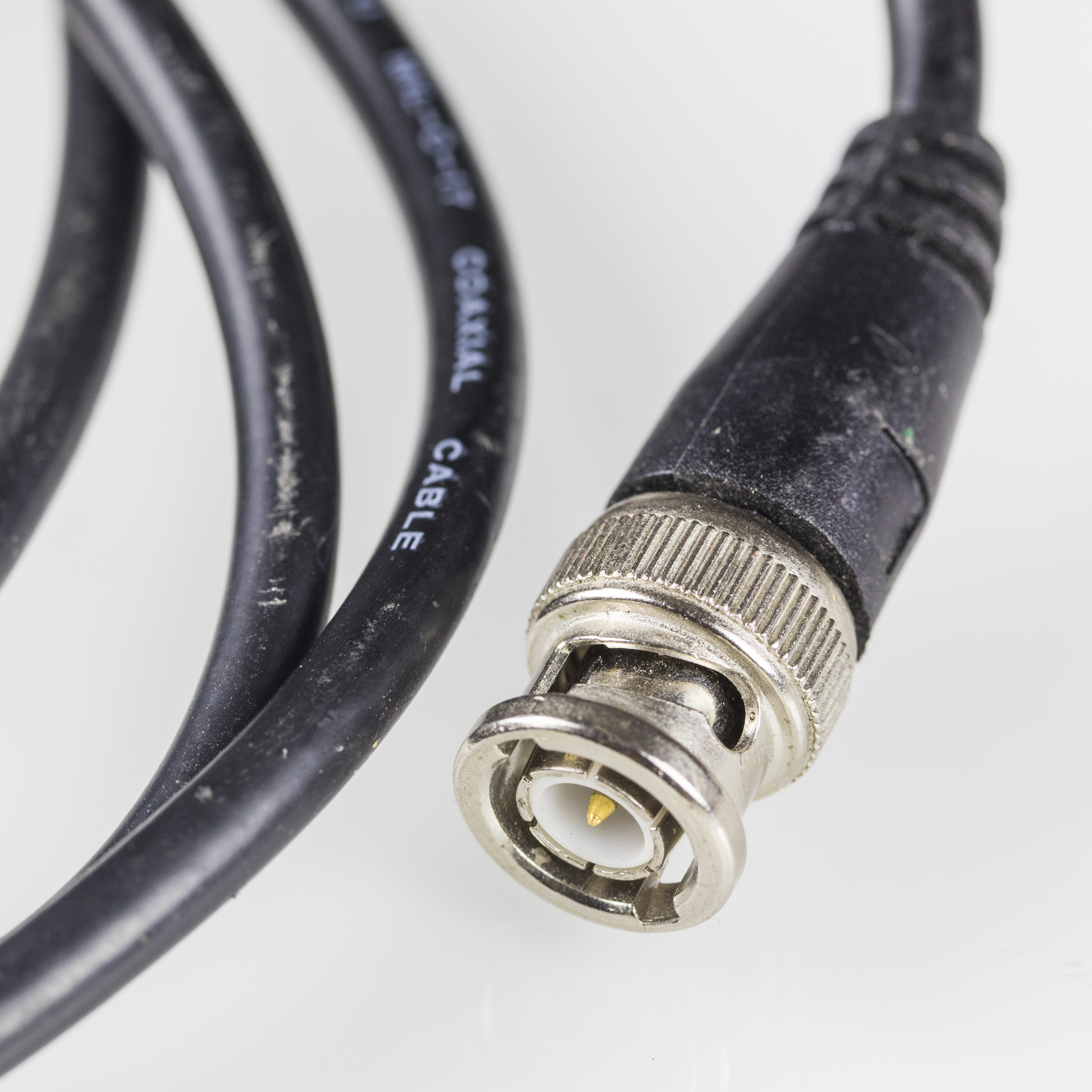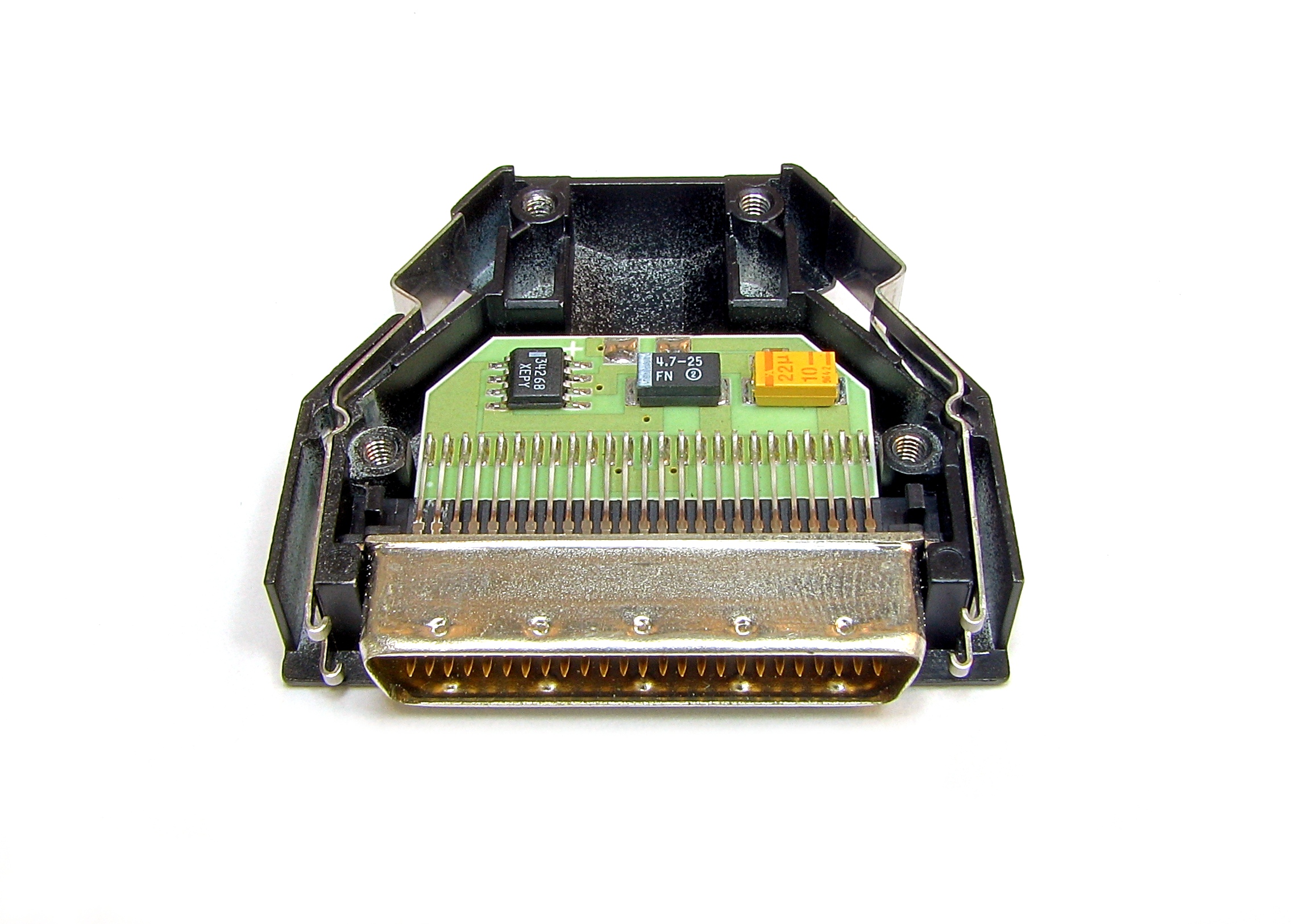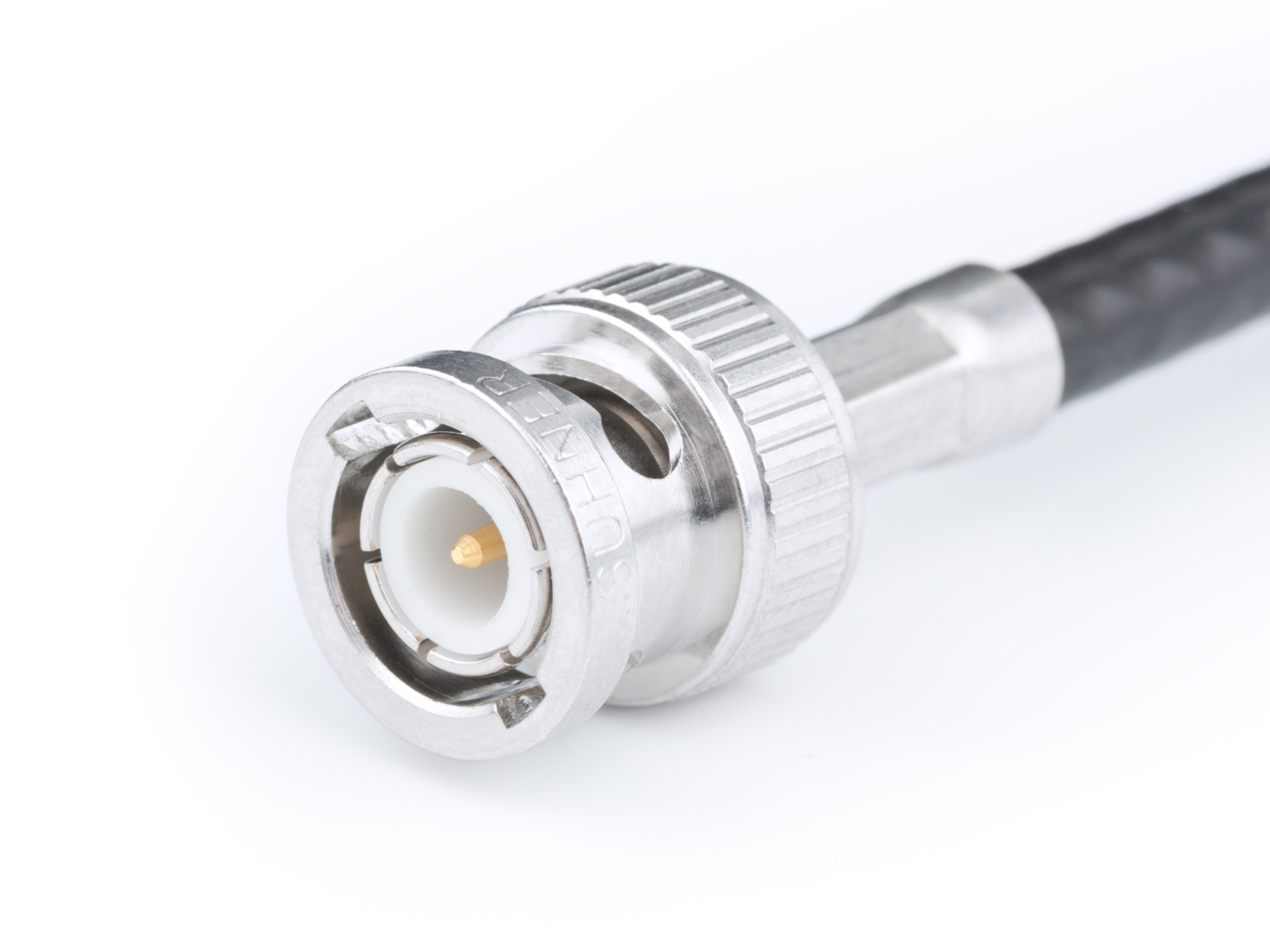|
EAD-socket
An EAD socket was a network connection socket used in the early 1990s. They are now considered obsolete. Ethernet networking of this period (mid 1980s to mid 1990s) used "thin coax" or 10BASE2. All devices on a network segment connected to the same electrical section of RG-58 coaxial cable. Intermediate devices were connected via a T piece. The two ends of the segment were terminated with a resistive network terminator. Although these networks were reliable when connected, they were prone to accidental misconnection by non-technical office staff. This was particularly an issue when devices, such as desktop computers, were being added or removed from the network. Although a rare need at this time, the situation was even worse for portable laptops. To avoid some of the drawbacks with 10BASE2 over BNC connectors, the EAD socket was one of several alternatives developed to give an "office friendly" network connector that could easily be connected and disconnected, and avoided the ri ... [...More Info...] [...Related Items...] OR: [Wikipedia] [Google] [Baidu] |
TAE Connector
TAE (''Telekommunikations-Anschluss-Einheit'' or telecommunications connection unit) is the German standard for telephone plugs and sockets. The standard covers two TAE types: F ("Fernsprechgerät": for telephones) and N ("Nebengerät" or "Nichtfernsprechgerät": for other devices such as answering machines and modems). U coded sockets and plugs are universal connectors that are suitable for both device types. E-coded connectors that are used in EAD-sockets are not intended for telephony applications. History The TAE system was introduced in the late 1980s before the German government-owned institution Deutsche Bundespost (DBP, German Federal Post) was divided into Deutsche Post (postal service), Deutsche Telekom (telecommunication services) and Postbank (financial services). Previously, the older type connectors had been used, or telephones had been hardwired to their () wall sockets, and only officially approved telephones (legally distributable only by the ... [...More Info...] [...Related Items...] OR: [Wikipedia] [Google] [Baidu] |
Ethernet
Ethernet () is a family of wired computer networking technologies commonly used in local area networks (LAN), metropolitan area networks (MAN) and wide area networks (WAN). It was commercially introduced in 1980 and first standardized in 1983 as IEEE 802.3. Ethernet has since been refined to support higher bit rates, a greater number of nodes, and longer link distances, but retains much backward compatibility. Over time, Ethernet has largely replaced competing wired LAN technologies such as Token Ring, FDDI and ARCNET. The original 10BASE5 Ethernet uses coaxial cable as a shared medium, while the newer Ethernet variants use twisted pair and fiber optic links in conjunction with switches. Over the course of its history, Ethernet data transfer rates have been increased from the original to the latest , with rates up to under development. The Ethernet standards include several wiring and signaling variants of the OSI physical layer. Systems communicating over Ethernet ... [...More Info...] [...Related Items...] OR: [Wikipedia] [Google] [Baidu] |
10BASE2
10BASE2 (also known as cheapernet, thin Ethernet, thinnet, and thinwire) is a variant of Ethernet that uses thin coaxial cable terminated with BNC connectors to build a local area network. During the mid to late 1980s this was the dominant 10 Mbit/s Ethernet standard, but due to the immense demand for high-speed networking, the low cost of Category 5 cable, and the popularity of 802.11 wireless networks, both 10BASE2 and 10BASE5 have become increasingly obsolete, though devices still exist in some locations. As of 2011, IEEE 802.3 has deprecated this standard for new installations. Name origination The name ''10BASE2'' is derived from several characteristics of the physical medium. The ''10'' comes from the transmission speed of 10 Mbit/s. The ''BASE'' stands for baseband signaling, and the ''2'' for a maximum segment length approaching 200 m (the actual maximum length is 185 m). Signal encoding 10 Mbit/s Ethernet uses Manchester coding. A binary ze ... [...More Info...] [...Related Items...] OR: [Wikipedia] [Google] [Baidu] |
Network Segment
A network segment is a portion of a computer network. The nature and extent of a segment depends on the nature of the network and the device or devices used to interconnect end stations. Ethernet According to the defining IEEE 802.3 standards for Ethernet, a network segment is an ''electrical connection'' between networked devices using a shared medium. In the original 10BASE5 and 10BASE2 Ethernet varieties, a segment would therefore correspond to a single coax cable and all devices tapped into it. At this point in the evolution of Ethernet, multiple network segments could be connected with repeaters (in accordance with the 5-4-3 rule for 10 Mbit Ethernet) to form a larger collision domain. With twisted-pair Ethernet, electrical segments can be joined together using repeaters or repeater hubs as can other varieties of Ethernet. This corresponds to the extent of an OSI layer 1 network and is equivalent to the collision domain. The 5-4-3 rule applies to this collision domain. ... [...More Info...] [...Related Items...] OR: [Wikipedia] [Google] [Baidu] |
RG-58
RG-58/U is a type of coaxial cable often used for low-power signal and RF connections. The cable has a characteristic impedance of either 50 or 52 Ω. "RG" was originally a unit indicator for bulk RF cable in the U.S. military's Joint Electronics Type Designation System. There are several versions covering the differences in core material (solid or braided wire) and shield (70% to 95% coverage). The outside diameter of RG-58 is around 0.2 inches (5 mm). RG-58 weighs around 0.025 lb/ft (37 g/m), exhibits approximately 25 pF/ft (82 pF/m) capacitance and can tolerate a maximum of 300 V potential (1800 W). Plain RG-58 cable has a solid center conductor. The RG-58A/U features a flexible 7- or 19-strand center conductor. Most two-way radio communication systems, such as marine, CB radio, amateur, police, fire, WLAN antennas etc., are designed to work with a 50 Ω cable. RG-58 cable is often used as a generic carrier of signals in labo ... [...More Info...] [...Related Items...] OR: [Wikipedia] [Google] [Baidu] |
Coaxial Cable
Coaxial cable, or coax (pronounced ) is a type of electrical cable consisting of an inner conductor surrounded by a concentric conducting shield, with the two separated by a dielectric ( insulating material); many coaxial cables also have a protective outer sheath or jacket. The term ''coaxial'' refers to the inner conductor and the outer shield sharing a geometric axis. Coaxial cable is a type of transmission line, used to carry high-frequency electrical signals with low losses. It is used in such applications as telephone trunk lines, broadband internet networking cables, high-speed computer data busses, cable television signals, and connecting radio transmitters and receivers to their antennas. It differs from other shielded cables because the dimensions of the cable and connectors are controlled to give a precise, constant conductor spacing, which is needed for it to function efficiently as a transmission line. Coaxial cable was used in the first (1858) and followin ... [...More Info...] [...Related Items...] OR: [Wikipedia] [Google] [Baidu] |
Tee Connector
A tee connector is an electrical connector that connects three cables together. It is usually in the shape of a capital T. It is usually used for coax cables and the three connector points can be either female or male gender, and could be different or the same standard, such as F type, BNC or N type. Tee connectors can be used to split radio frequency power from a cable into two. They can be used to attach a piece of electronic test equipment. Tee connectors were used on 10BASE2 Ethernet Ethernet () is a family of wired computer networking technologies commonly used in local area networks (LAN), metropolitan area networks (MAN) and wide area networks (WAN). It was commercially introduced in 1980 and first standardized in 198 ... networks. RF connectors {{electrical-connector-stub ... [...More Info...] [...Related Items...] OR: [Wikipedia] [Google] [Baidu] |
Electrical Termination
In electronics, electrical termination is the practice of ending a transmission line with a device that matches the characteristic impedance of the line. Termination prevents signals from reflecting off the end of the transmission line. Reflections at the ends of unterminated transmission lines cause distortion which can produce ambiguous digital signal levels and mis-operation of digital systems. Reflections in analog signal systems cause such effects as video ghosting, or power loss in radio transmitter transmission lines. Transmission lines Signal termination often requires the installation of a terminator at the beginning and end of a wire or cable to prevent an RF signal from being reflected back from each end, causing interference, or power loss. The terminator is usually placed at the end of a transmission line or daisy chain bus (such as in SCSI), and is designed to match the AC impedance of the cable and hence minimize signal reflections, and power losses. Less com ... [...More Info...] [...Related Items...] OR: [Wikipedia] [Google] [Baidu] |
Network Terminator
In electronics, electrical termination is the practice of ending a transmission line with a device that matches the characteristic impedance of the line. Termination prevents signals from reflecting off the end of the transmission line. Reflections at the ends of unterminated transmission lines cause distortion which can produce ambiguous digital signal levels and mis-operation of digital systems. Reflections in analog signal systems cause such effects as video ghosting, or power loss in radio transmitter transmission lines. Transmission lines Signal termination often requires the installation of a terminator at the beginning and end of a wire or cable to prevent an RF signal from being reflected back from each end, causing interference, or power loss. The terminator is usually placed at the end of a transmission line or daisy chain bus (such as in SCSI), and is designed to match the AC impedance of the cable and hence minimize signal reflections, and power losses. Less com ... [...More Info...] [...Related Items...] OR: [Wikipedia] [Google] [Baidu] |
BNC Connector
The BNC connector (initialism of "Bayonet Neill–Concelman") is a miniature quick connect/disconnect radio frequency connector used for coaxial cable. It is designed to maintain the same characteristic impedance of the cable, with 50 ohm and 75 ohm types being made. It is usually applied for video and radio frequency connections up to about 2 GHz and up to 500 volts. The connector has a twist to lock design with two lugs in the female portion of the connector engaging a slot in the shell of the male portion. The type was introduced on military radio equipment in the 1940s and has since become widely applied in radio systems, and is a common type of video connector. Similar radio-frequency connectors differ in dimensions and attachment features, and may allow for higher voltages, higher frequencies, or three-wire connections. Description The BNC connector features two bayonet lugs on the female connector; mating is fully achieved with a quarter turn of the coupling nut. It u ... [...More Info...] [...Related Items...] OR: [Wikipedia] [Google] [Baidu] |
Ethernet Over Twisted Pair
Ethernet over twisted-pair technologies use twisted-pair cables for the physical layer of an Ethernet computer network. They are a subset of all Ethernet physical layers. Early Ethernet used various grades of coaxial cable, but in 1984, StarLAN showed the potential of simple unshielded twisted pair. This led to the development of 10BASE-T and its successors 100BASE-TX, 1000BASE-T and 10GBASE-T, supporting speeds of 10 and 100 megabit per second, then 1 and 10 gigabit per second respectively. Two new variants of 10 megabit per second Ethernet over a ''single'' twisted pair, known as 10BASE-T1S and 10BASE-T1L, were standardized in IEEE Std 802.3cg-2019. 10BASE-T1S has its origins in the automotive industry and may be useful in other short-distance applications where substantial electrical noise is present. 10BASE-T1L is a long-distance Ethernet, supporting connections up to 1 km in length. Both of these standards are finding applications implementing the ... [...More Info...] [...Related Items...] OR: [Wikipedia] [Google] [Baidu] |







